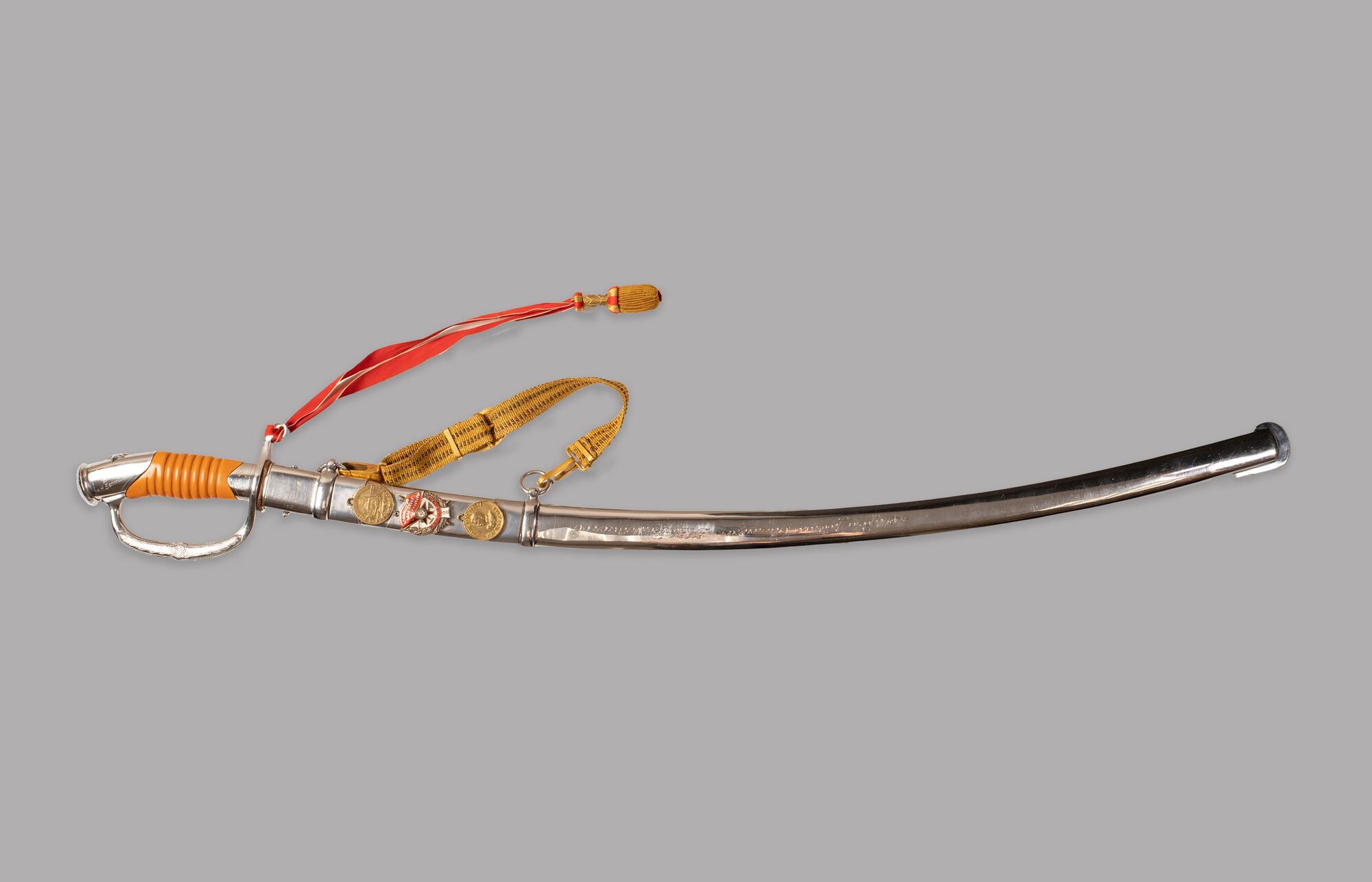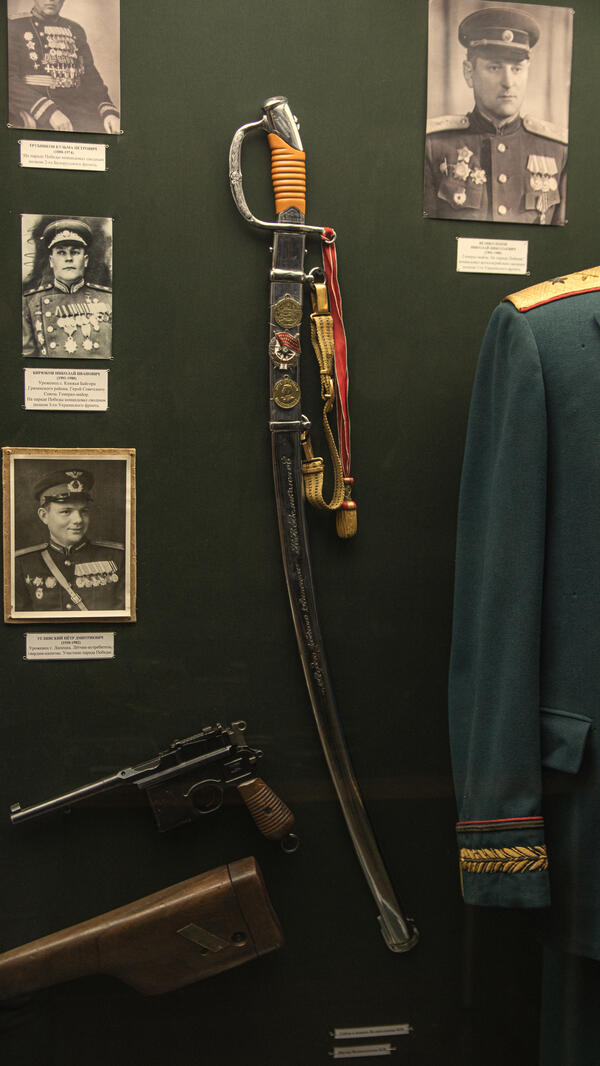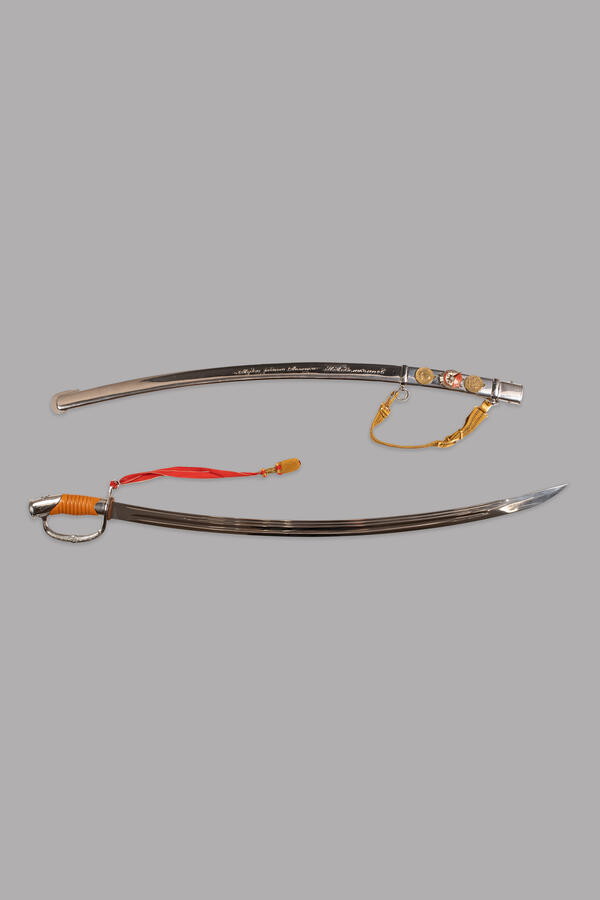A saber is a bladed edged weapon intended for slashing or thrusting, which was primarily used by the cavalry, because it was relatively long and easy to strike with while on horseback.
The cavalry, sabers and shashkas, were used in combat until the end of the Great Patriotic War. The saber is currently used as a ceremonial weapon during military parades. Sabers were kept in metal scabbards, which were sometimes coated with chrome or nickel.
The saber from the collection of the Lipetsk Regional Museum of Local Lore belonged to Major General Nikolay Nikolaevich Velikolepov (1902–1980), a native of the city of Lipetsk, a professional soldier, and a participant in the Great Patriotic War from its first to its last day.
As early as on June 22, Velikolepov became head of the intelligence department of the artillery headquarters of the Western Front. He took part in organizing defense near Minsk, Mogilev, and Smolensk. He was awarded his first order for the preparation and conduct of the first artillery offensive in the Volokolamsk region near Moscow.
In the final stage of the Great Patriotic War, Nikolay Nikolayevich commanded the 19th breakthrough division of the Reserve of the High Command. The Major of the Guard ended the war on May 8, 1945 in the Alps. Nikolay Velikolepov took part in the Victory Parade on June 24, 1945 on Red Square in Moscow as part of the 3rd Ukrainian Front.
Velikolepov was awarded the Orders of Lenin, three Red Banners, the 2nd class Order of Kutuzov, the 2nd class Order of Bogdan Khmelnitsky, and the Red Star, as well as the medals “For Moscow” and “For Victory over Germany”. After the war, he wrote the book “Fire for Victory”.
After Nikolay Nikolaevich died, his wife, Anna Davydovna Borodkina (Velikolepova), handed over a number of things to the Lipetsk Regional Museum of Local Lore. The donations included documents, photographs, albums, souvenirs, ceremonial clothes, weapons, including a saber in a scabbard with a dedicatory inscription:
The cavalry, sabers and shashkas, were used in combat until the end of the Great Patriotic War. The saber is currently used as a ceremonial weapon during military parades. Sabers were kept in metal scabbards, which were sometimes coated with chrome or nickel.
The saber from the collection of the Lipetsk Regional Museum of Local Lore belonged to Major General Nikolay Nikolaevich Velikolepov (1902–1980), a native of the city of Lipetsk, a professional soldier, and a participant in the Great Patriotic War from its first to its last day.
As early as on June 22, Velikolepov became head of the intelligence department of the artillery headquarters of the Western Front. He took part in organizing defense near Minsk, Mogilev, and Smolensk. He was awarded his first order for the preparation and conduct of the first artillery offensive in the Volokolamsk region near Moscow.
In the final stage of the Great Patriotic War, Nikolay Nikolayevich commanded the 19th breakthrough division of the Reserve of the High Command. The Major of the Guard ended the war on May 8, 1945 in the Alps. Nikolay Velikolepov took part in the Victory Parade on June 24, 1945 on Red Square in Moscow as part of the 3rd Ukrainian Front.
Velikolepov was awarded the Orders of Lenin, three Red Banners, the 2nd class Order of Kutuzov, the 2nd class Order of Bogdan Khmelnitsky, and the Red Star, as well as the medals “For Moscow” and “For Victory over Germany”. After the war, he wrote the book “Fire for Victory”.
After Nikolay Nikolaevich died, his wife, Anna Davydovna Borodkina (Velikolepova), handed over a number of things to the Lipetsk Regional Museum of Local Lore. The donations included documents, photographs, albums, souvenirs, ceremonial clothes, weapons, including a saber in a scabbard with a dedicatory inscription:




